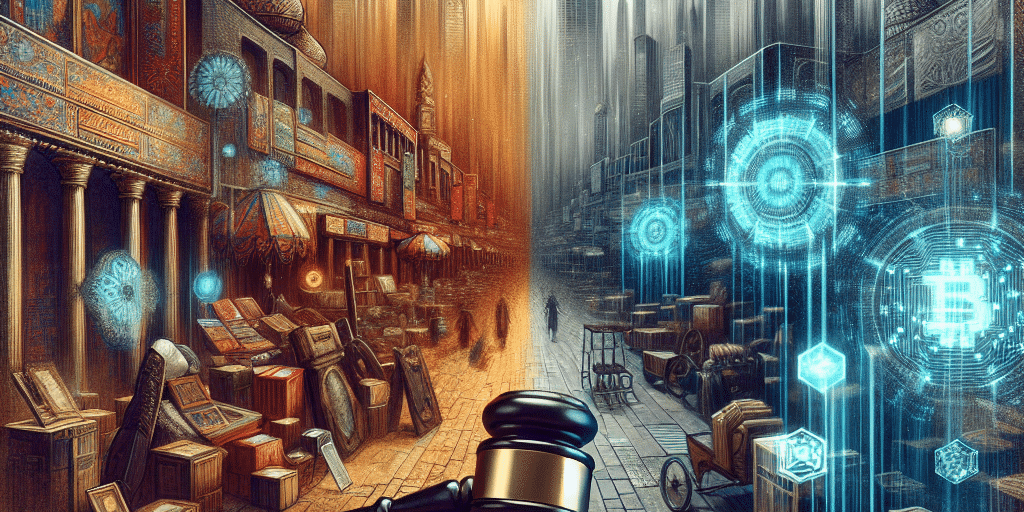Title: The Evolving Landscape of the Art Market: Predictions for the Future
In recent years, the art market has experienced significant transformations driven by a confluence of technological innovations, shifting consumer preferences, and economic developments. As we stand on the brink of further evolution, it’s an opportune moment to explore the trajectory of this vibrant and intriguing market. Here are some key predictions for the future of the art market.
1. Digital Art and NFTs: The New Vanguard
Arguably the most disruptive development in the art world lately has been the emergence of digital art and NFTs (non-fungible tokens). What began as a niche interest has exploded into a mainstream phenomenon. The sale of digital artworks as NFTs provides a novel way for artists to monetize their creations while offering collectors a way to own a piece of digital history.
In the future, the NFT marketplace is expected to become more refined and regulated, enhancing buyer confidence. As more established artists embrace digital mediums, NFT art could gain additional validation and permanence in the art world. Moreover, decentralized platforms might evolve to accommodate collaborative and programmable art forms, further stretching the boundaries of creativity.
2. The Rise of Inclusivity and Diverse Voices
The art world has long been critiqued for its lack of diversity and inclusion. However, globalization and social movements have brought more attention to underrepresented voices. The future of the art market is likely to feature more artists from diverse backgrounds, offering varied perspectives that challenge traditional paradigms.
Art institutions, galleries, and collectors are being pushed towards inclusivity, leading to a broader range of exhibitions and investments in works by women, LGBTQ+ artists, and artists of color. This shift not only enriches the cultural tapestry but also presents fresh opportunities for discovery and innovation within the market.
3. The Integration of AI and Technology in Art Creation
As technology advances, artificial intelligence is increasingly being used as a tool for artistic creation. While some view AI-generated art with skepticism, it remains an exciting frontier for exploration. Future trends may see artists collaborating with AI to produce new styles or techniques, blurring the lines between human and machine creativity.
Additionally, augmented reality (AR) and virtual reality (VR) technologies are expected to play influential roles in enhancing the art-viewing experience. Galleries and online platforms could leverage these technologies to create immersive environments, allowing audiences to experience art in novel and interactive ways.
4. Online Marketplaces and Democratisation
Online platforms have substantially democratized the art buying process, making it easier for both seasoned collectors and new buyers to access artworks from around the world. In the coming years, the art market will likely continue to expand its presence online, with e-commerce platforms offering sophisticated tools for purchasing, authentication, and valuation.
By making art more accessible, these platforms are likely to attract a younger, tech-savvy demographic. This trend may lead to a more dynamic and fast-paced market, with digital interactions complementing traditional brick-and-mortar experiences.
5. Sustainability and Ethical Practices
With increasing awareness of environmental issues, sustainability is becoming a significant concern in the art world. Future trends suggest a shift towards more sustainable practices, such as eco-friendly materials and processes in art creation and the promotion of ethical sourcing and investment.
Institutions and galleries may also prioritize exhibitions and artworks that address environmental themes, fostering a dialogue around these critical issues. This growing demand for sustainable art practices may also influence market prices and the valuation of art in new ways.
Conclusion
As the art market evolves, it is reshaped by diverse factors that challenge its traditional boundaries and create opportunities for innovation. From embracing technological advancements to promoting inclusivity and sustainability, the future art landscape appears poised for dynamic change. Collectors, creators, and consumers alike will need to adapt to these developments, ensuring the art market remains vibrant and relevant in the years to come.







